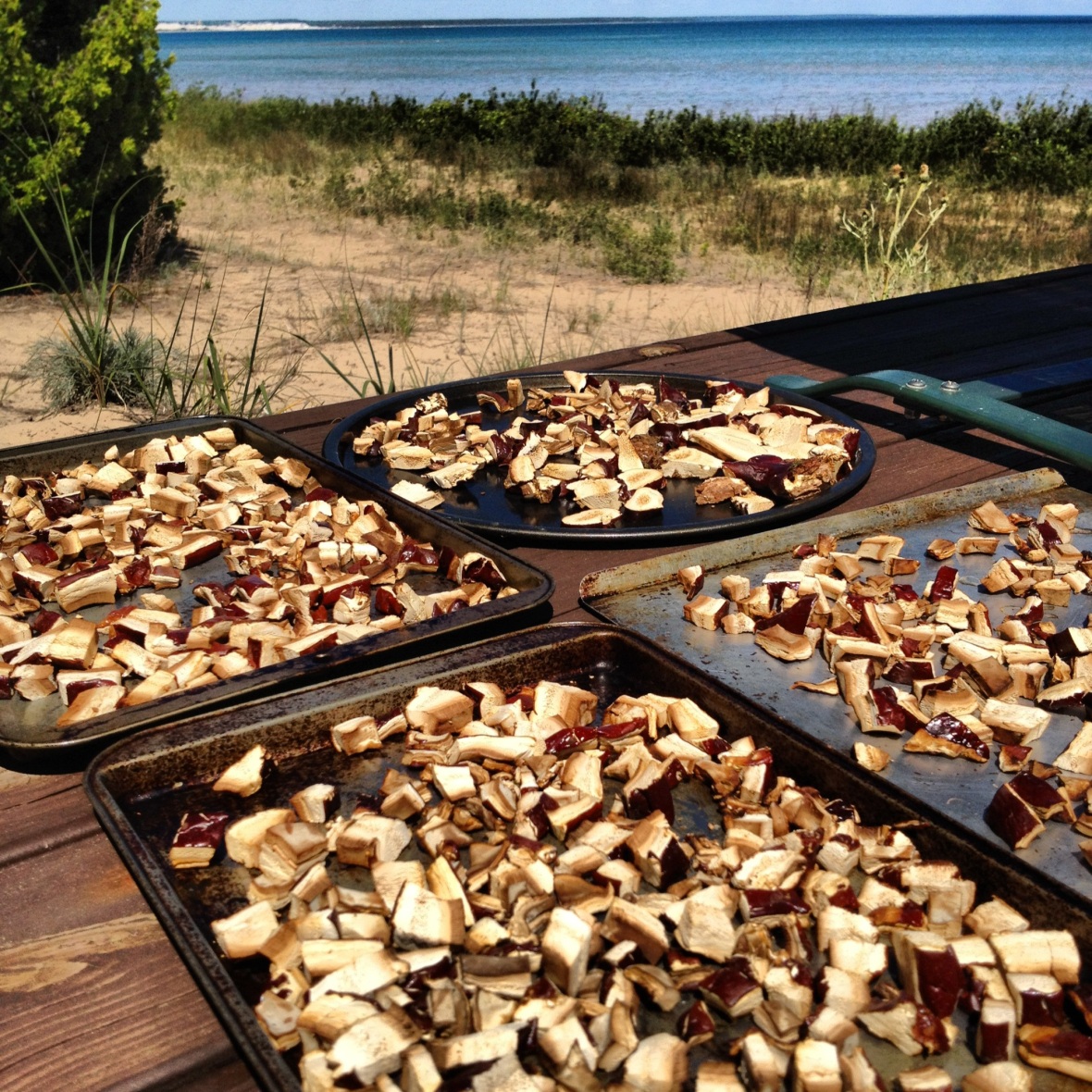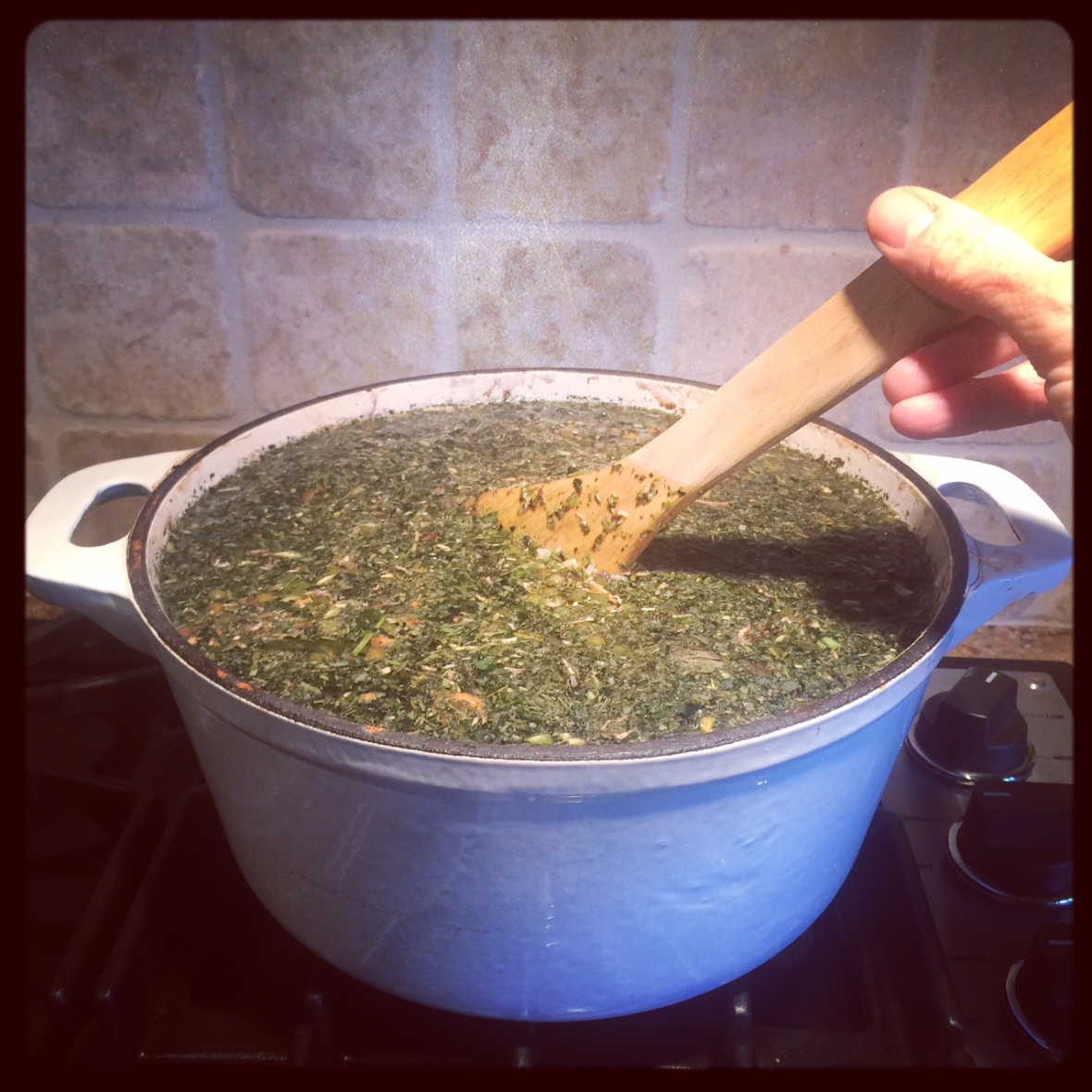Nourishing With Herbal & Bone Broths
Broths! This may seem like the newest food trend but alas – herbal and bone broths have been in simmering on the stoves of healing kitchens across the globe and across time. In Traditional Chinese Medicine, broth is a key component to building yin deficiency and nourishing the body, and the Jewish bubbe knows that chicken soup is her form of penicillin. It’s an ancient food.

Is it broth or stock? There is much banter back and forth between culinary professionals as to the difference between stocks and broths: To me, that’s like asking the difference between potato or po-tah-to. Personally, I consider stock (made from bones, meat and soft tissue – and sometimes prepared with herbs and veggies) a key staple in every kitchen. I consider broth the final preparation that is actually served at the table.
As an herbalist (and home cook, athlete and MOM), my focus is on making broths with nutritive benefits that come from cooking the bones (preferably from pastured, organic animals), soft connective tissue, herbal plants and mushrooms. Broths can be especially powerful when power-packed with nutritive herbs and medicinal plants like nettle, red clover, oatstraw, seaweeds, horsetail, astragalus, burdock and wild foraged medicinal mushrooms like reishi, maitake, shitake, and chaga.

I use broths as a simple soup and in many cooked dishes in my kitchen. It is a very nutrient dense, healing food! With the bones, connective tissue, herbs and veggies, a long cooking time (about 2 days, consistent heat, immediate storage) plus an acid added to the simmer (vinegar or tomato paste) extracts the minerals and amino acids found in bone and soft tissue into the broth.
Gelatin is made in the process of boiling stock that comes from the bones and the soft tissues of cartilage — which then produces collagen and thus amino acids for the body. These are then are the foundational building blocks for developing the body’s muscle and soft tissue. Consuming these as a broth makes them bioavailable to the body and easily digestible to nourish both the tissues and the immune system. ***
Broth can provide these building blocks to nourish the gastrointestinal tract, lubricate joints, re-vitalize skin, build muscle fibers, and enriches the blood. Consumed as part of a regular diet, broths can ease inflammatory bowel disease, serve as a preventative for rheumatoid arthritis (offering a food source of glycosamine), ease ulcerative colitis and gastritis, and address mineral deficiencies from a whole foods-centered perspective.
Broths should be a part of anyone’s approach to healing illness or debility. Recovering from the flu? Broths are easily digestible and can offer the immune system nutrients to rebuild while recovering from illness.
Healing a bone fracture, herniated disc, torn ligament or rebuilding dental deterioration? Because of the proteins, collagen and amino acids, the nutrients in broths can facilitate wound healing and support tissue repair.
Undergoing surgery? Broths can be included also as part of a pre- and post operative care regime to ensure the body has accesses to the most nutrients to endure surgery and facilitate recovery.
A staple of my own diet, it’s great to see bone broth is becoming mainstream! I stock my own kitchen with broth for use across the year. It makes it super-easy to have on hand for both cooking and use when one of us in the family is sick.
I’ve learned many things about stock making over the years, and will say this: While there are a lot of techniques to produce the perfect stock, don’t stress. It doesn’t have to be perfectly clear like a consumme, or kept on a low simmer (we are extracting minerals here, so turning up the heat high if you don’t have a lot of time won’t matter – because heat doesn’t destroy minerals).
I invite you to learn more about broths and herbs I use to fortify my broth. Read more ON MY BLOG for my recipes (with vegan tips as well). For classes on broths and broth making, check out my upcoming CLASSES. To purchase my foraged herbs and medicinal mushrooms for your broth, visit my ONLINE shop.
Here are some recent links on the subject for your discernment:
Click HERE to see my most recent convo with WZZM13’s Healthy U and Val Lego on broths.
Jim McDonald’s recipes, musings and links on Broth
Chef Michael Rhulman’s Recipe for a Stovetop Stock plus links & Yummy bacteria convo
The Nourished Kitchen on Bone Broths with links to easy crock pot recipes.
More broth safety tips from The Kitchn.
My favorite SeaWeed Source: NatureSpirit Herbs
Need herbs? Organic, bulk herbs available from Mountain Rose Herbs. But they can also sometimes be sourced locally using LocalHarvest.org.
Grassfed, pastured healthy bones for stock: LocalHarvest.Org for a farmer nearest you
Mushroom sources at Mushroom Harvest

***Vegans will miss these benefits from stock, but there are herbal broths I recommend to provide key minerals for the body including magnesium, calcium, phosphorus, and silica. READ MORE for tips I offer those wishing to follow a plant-based diet.



I never knew that the addition of an acidic ingredient helped with the extraction of good stuff. I will include one from now on! Thanks for the tip! 🙂